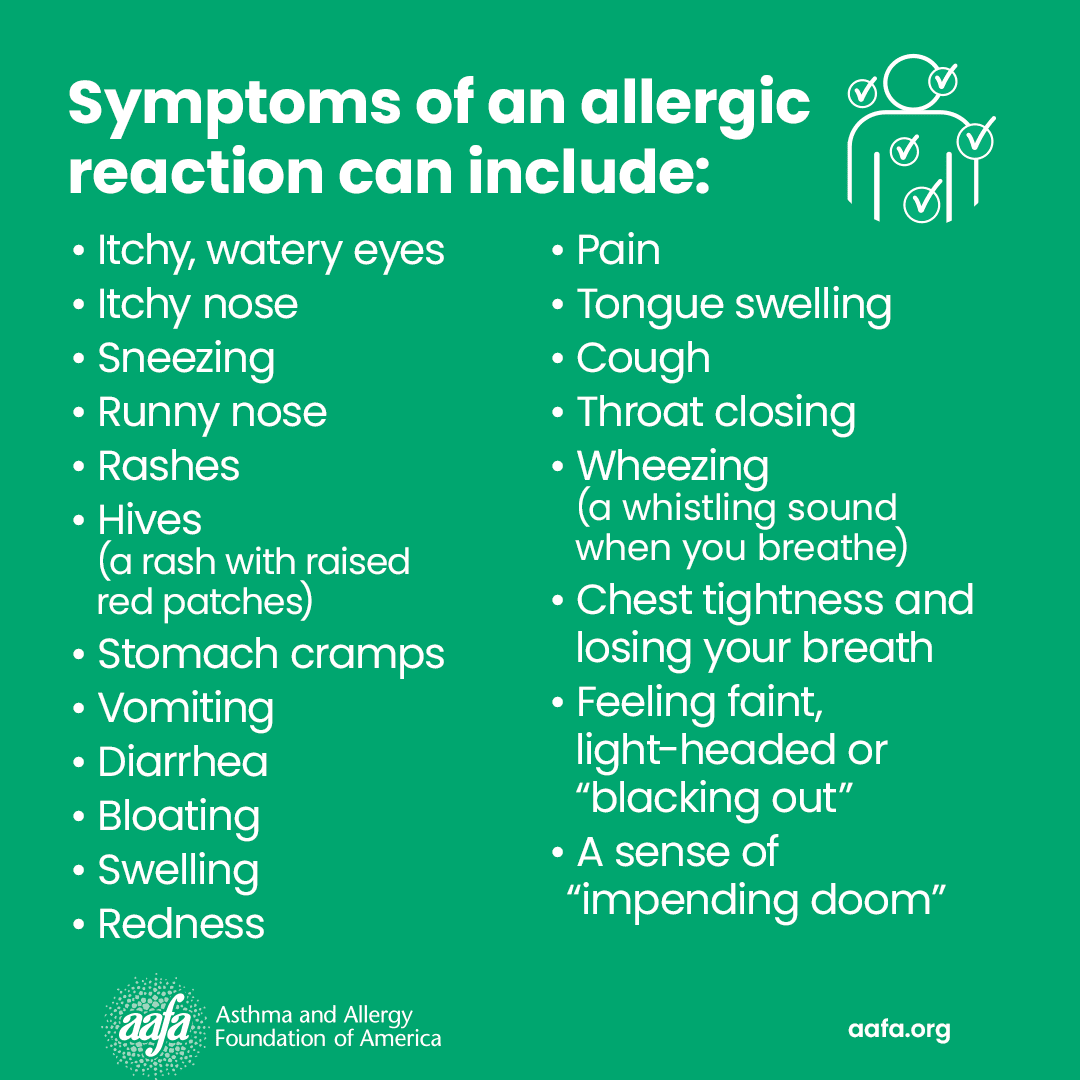Allergy Symptoms
What Is an Allergy?
An allergy occurs when the body’s immune system sees a substance as harmful and overreacts to it. The symptoms that result are an allergic reaction. The substances that cause allergic reactions are allergens.
Allergens can get into your body many ways to cause an allergic reaction.
- You can inhale allergens into your nose and your lungs. Many are small enough to float through the air. Examples are pollen, house dust, mold spores, cat and dog dander and latex dust.
- You can ingest allergens by mouth. This includes food and medicines you eat or swallow.
- Your body can have allergens injected into it. This includes medicine given by needle and venom from insect stings and bites.
- Your skin can absorb allergens. Plants such as poison ivy, sumac and oak can cause reactions when touched. Latex, metals, and ingredients in beauty care and household products are other examples.
Symptoms of an Allergic Reaction
The severity of symptoms during an allergic reaction can vary widely. Some of the symptoms of an allergic reaction include:
|
|
Some of these symptoms can be sign of a life-threatening allergic reaction.
Anaphylaxis [anna-fih-LACK-sis] is a severe allergic reaction that can be life-threatening and requires immediate medical attention. It happens fast and may cause death. Symptoms usually involve more than one part of the body, such as the skin or mouth, the lungs, the heart and the gut. Learn more about anaphylaxis.
Eye allergies are common. Eye allergies are a reaction to indoor and outdoor allergens that get into your eyes. The tissue that lines the inside of the eyelid and outside of the eyeball becomes inflamed and swollen and leads to itching, redness, tearing and irritation of the eyes.
Skin allergies occur when your skin comes in contact with an allergen that your skin is sensitive or allergic to. Also, allergies to other things, like food you eat or proteins you inhale or touch, may cause symptoms to appear on your skin. The allergic reaction usually appears within 48 hours after the initial exposure to the allergen. Symptoms often include the following: redness, swelling, blistering, itching, hives and rashes. The allergen doesn’t have to be new to you. It can be something you’ve been using or eating for many years. Common skin allergies include allergic contact dermatitis, eczema, chronic urticaria and angioedema.
The word rhinitis means “inflammation of the nose.” When the nose becomes irritated by allergens or irritants, it may produce more and thicker mucus than usual. This drainage can irritate the back of the throat and cause coughing. Allergic reactions can also cause congestion, itchy nose or throat, sneezing, a runny nose and itchy, watery eyes.
Sinusitis is an infection or inflammation of the sinuses. A sinus is a hollow space. There are many sinuses in the body, including four pairs inside the skull. They serve to lighten the skull and give resonance to the voice. These sinuses are lined with the same kind of tissue that lines the inside of the nose. The same things that can cause swelling in the nose – such as allergies or infection – can also affect the sinuses. When the tissue inside the sinuses becomes inflamed, mucus discharge is increased. Over time, air trapped inside the swollen sinuses can create painful pressure inside the head. This is a sinus headache.
Medical Review: November 2015
Allergy Capitals
Your location can have an impact on your seasonal allergies. AAFA’s Allergy Capitals™ report looks at the top 100 most challenging cities in the continental United States to live with seasonal pollen allergies.













